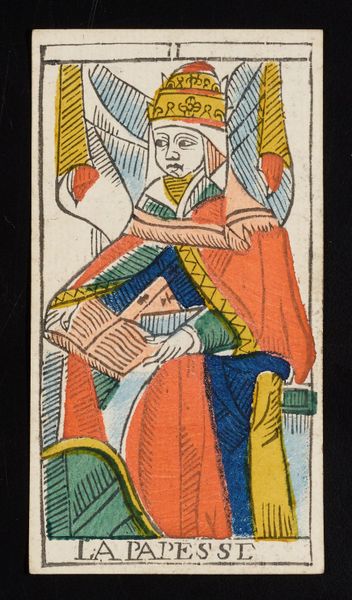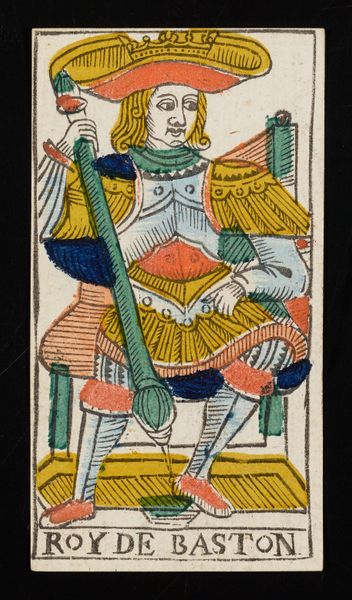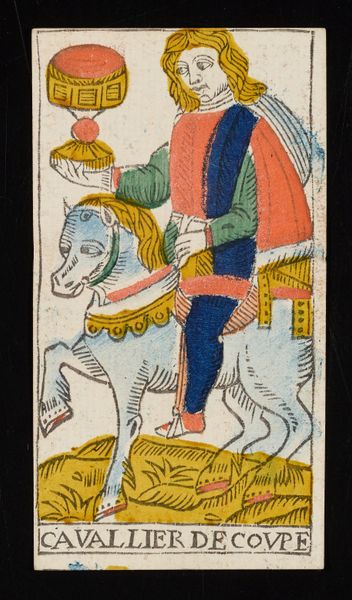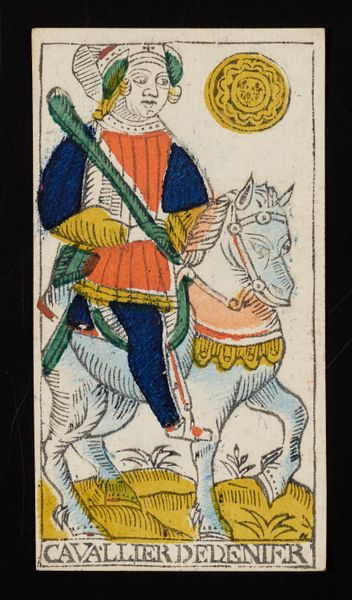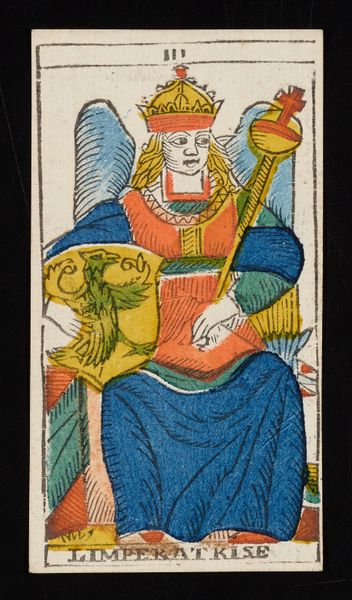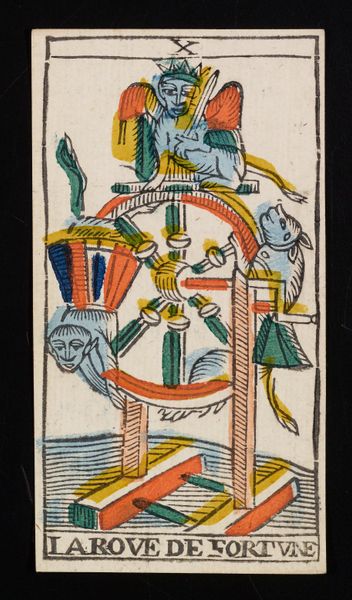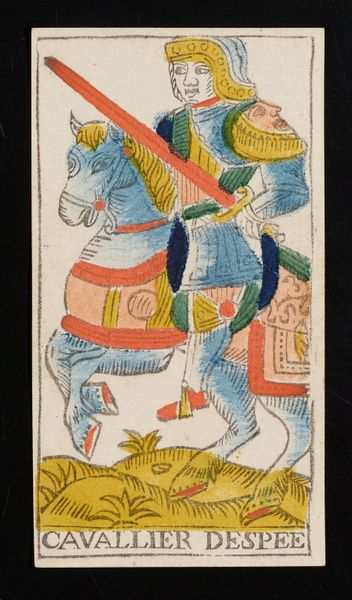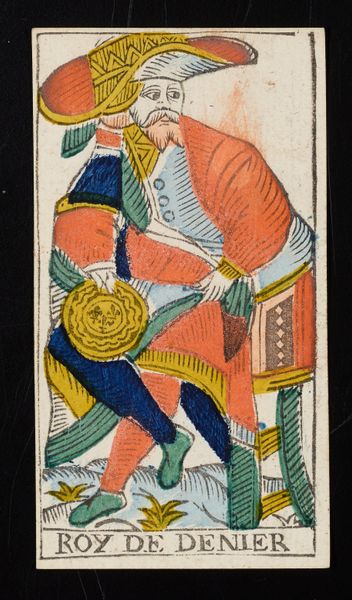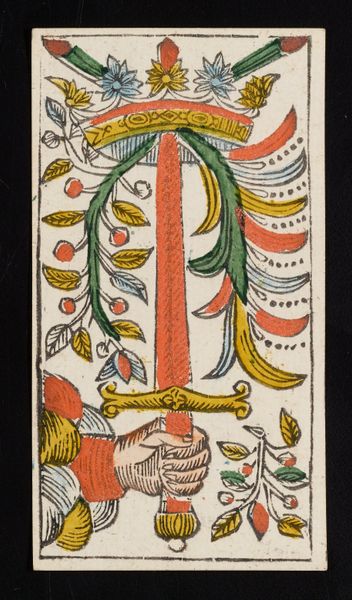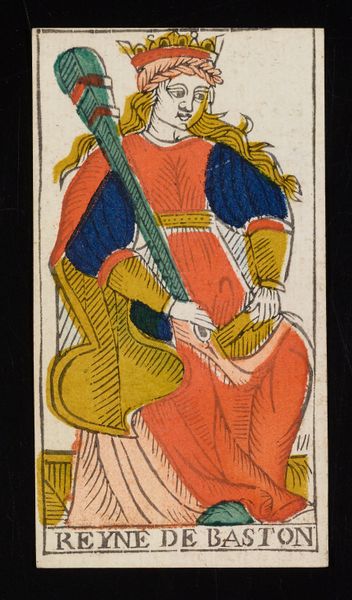
print, etching
#
medieval
#
linocut
# print
#
etching
#
figuration
#
history-painting
Dimensions: 4 7/16 x 2 7/16 in. (11.27 x 6.19 cm) (image, sheet)4 5/8 x 2 1/2 in. (11.75 x 6.35 cm) (sheet, each)
Copyright: Public Domain
This card, The Chariot, was made in the 18th century by Claude Burdel, using woodcut and stencil. The triumphant figure in a chariot, reminiscent of ancient Roman generals, carries echoes of victory and control. But let us delve deeper into this image and its symbols! The chariot itself, drawn by two horses, is an ancient motif seen in Greek and Roman art, representing triumph and power. Think of the Roman emperors entering their city in a four-horse chariot. The motif has been passed down through history, but here the horses face opposite directions, suggesting inner conflict. This tension adds a psychological depth to the card, reflecting the rider's emotional state. Indeed, The Chariot is not merely about external triumph, but also about the internal battle for mastery and direction. It calls upon subconscious memories of human striving, and the eternal quest for control. This symbol is more than meets the eye.
Comments
No comments
Be the first to comment and join the conversation on the ultimate creative platform.
